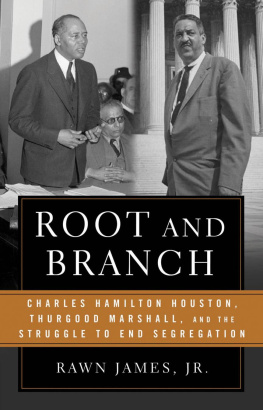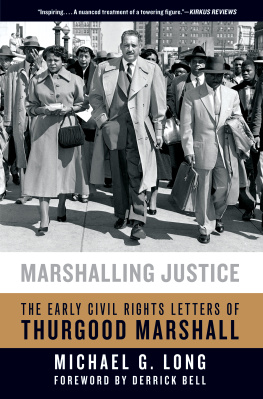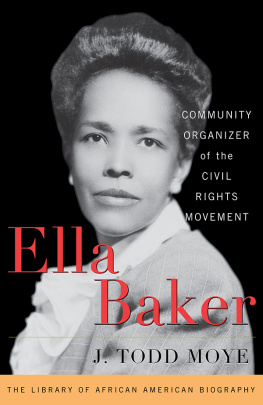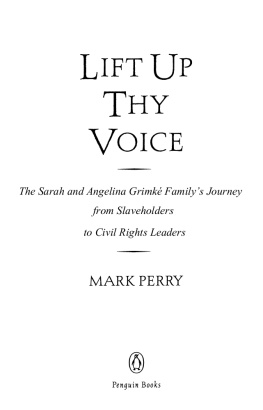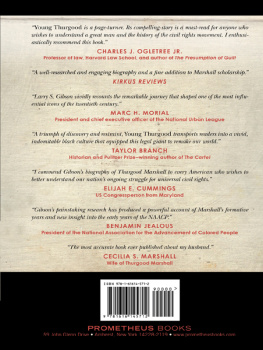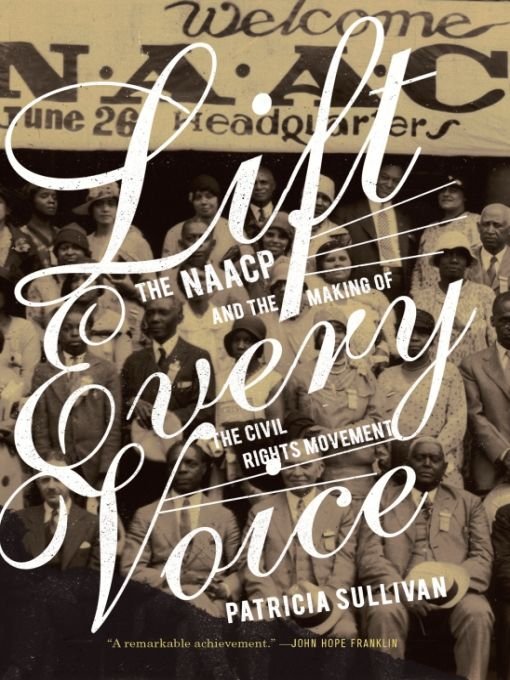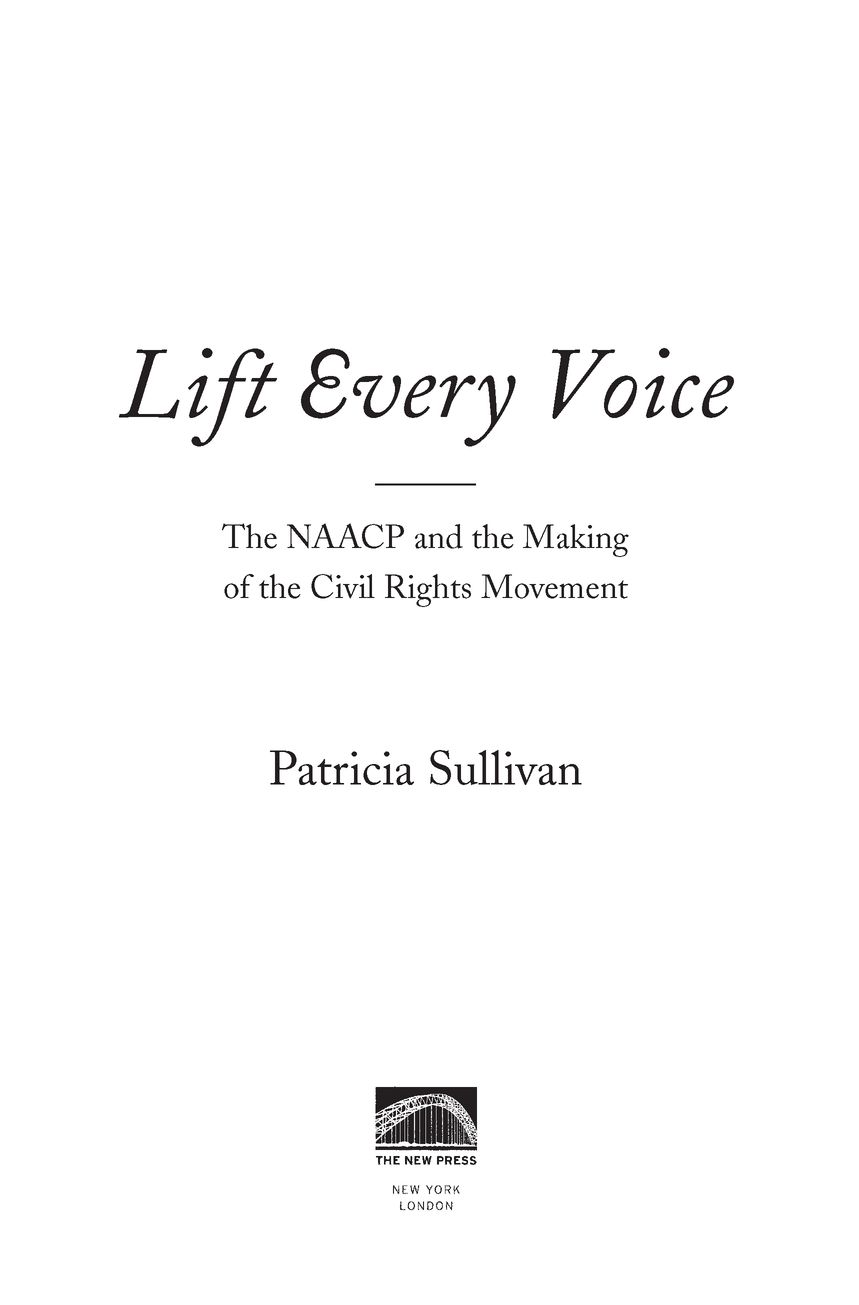Table of Contents
ALSO BY PATRICIA SULLIVAN
Days of Hope: Race and Democracy in the New Deal Era
Freedom Writer: Virginia Foster Durr, Letters from the Civil Rights Years
To the memory of
Joe Wood and
John Hope Franklin
Acknowledgments
Lift Every Voice began with Joe Wood, editor for The New Press. Joe wanted a history of the NAACP and he asked me write onenot an institutional history, he explained, but one that captured the pulse and life of the association. In short, Joe said, a book my parents will read. We imagined this book together.
The vast collection of NAACP papers at the Library of Congress made it possible. From the beginning, the association saved and preserved nearly everythingadministrative and legal files, field reports, branch correspondence, photographs, and much morecreating the largest and most important archival collection on race and civil rights in the United States of the twentieth century. Thanks to the NAACP and the Library of Congress, these documents are readily available. The librarys Manuscript Division has been like a second home. The women and men who staff the reading room create a perfect research environment and I am grateful to them for their generous assistance over the years.
A circle of historians and friends has been close by as I charted a course through an ocean of history. Their knowledge, insights, and encouragement have been formative as I conceptualized, researched, and wrote the book. Each of them has my abiding gratitude.
John Hope Franklin knew several of the leading figures, lived much of the history described here, and was deeply interested in the story of the NAACP. He shared recollections and read chapters, penciling them with edits, questions, and comments. Along the way, there were many conversations about the twists and turns of the history and its meaning.
My deep friendship with Waldo Martin and our longtime collaboration on scholarship and teaching centered on the African American experience in the United States anchors my work as a historian. We discussed approaches to a history of the NAACP from the time I began thinking about the project, and Waldo commented on chapters as the book unfolded. Lewis Steel, a leading civil rights attorney since the early 1960s, read every chapter. He raised penetrating questions, explained legal concepts, and provided editorial suggestionsexpanding my knowledge, sharpening my focus, and helping me achieve greater clarity. Lewis and Kitty Steelss steady encouragement and support has been wonderful.
Larissa Smith Fergeson, one of the most talented scholars working in the field of civil rights history, has generously shared her research on the NAACP in Virginia and was always ready to talk through any aspect of the work, from the small details to large interpretive questions. Lara commented on chapters, read page proofs, and helped in other immeasurable waysshe is an amazing friend. Raymond Gavinss work on the NAACP and the Jim Crow South has been a major influence on my work. Ray read several chapters and provided incisive suggestions. Discussions with Kenneth Mack about civil rights lawyers, as well as Kens comments on parts of the manuscript, helped me fine-tune a major theme of the book.
Henry Louis Gates Jr. has been an enthusiastic and generous supporteras a friend and as director of the W.E.B. Du Bois Institute for African and African American Research at Harvard University. The book took root at the Du Bois Institute and I have spent most summers there in conjunction with our NEH summer institutes on teaching the history of the civil rights movement, exploring many of the questions that have guided my research.
Steven Hahn read most of the manuscript. Missy Daniel, Eric Bargeron, Michaela ONeill Daniel, Deborah McDowell, and David Prior read various chapters. Lift Every Voice has benefited greatly from their comments, questions, and suggestions. Martha Mae Jones, Leon Litwack, William Preston, and Julius Scott have listened to me talk about the NAACP for almost a decade, shared thoughts and insights and helped me reach further.
A number of scholars have supported my efforts in a variety of ways. The late August Meier laid the groundwork and encouraged me early on. John Bracey, whose knowledge of the NAACP is boundless, has generously shared it with me. I am also grateful to Tony Badger, Elsa Barkley Brown, Mia Bay, Kevin Boyle, Claudia Brinson, Lewis Burke, Margaret Burnham, Bettye Collier Thomas, Andrew Fearnley, Kenneth Janken, David Levering Lewis, Kimberly Phillips, Stephen Tuck and Denton Watson.
Judge Robert L. Carter, NAACP attorney for twenty-five years and top assistant to Thurgood Marshall during the legal campaign against segregation, shared recollections and insights and answered my endless queries. Knowing Bob Carter has deepened my understanding of what it is all about.
Interviews and conversations with men and women associated with the NAACP or the broader movement it shaped helped to illuminate various aspects of the history. I am grateful to: Derrick Bell, Julian Bond, Dorothy Burnham, the late Johnnie Carr, John Doar, Vernon Jordan, Chuck McDew, Bob Moses, Martha Norman Noonan, Reverend Herbert Oliver, Judge Matthew J. Perry, Mildred Bond Roxborough, and Cleveland Sellers.
In 1948, Palmer Weber, then a thirty-four-year-old organizer, wrote from Georgia, Every day in the field, I thank God for the NAACP. It was my good fortune to meet Palmer when I was a graduate student in history. He turned my attention to the rich history of the NAACP early on.
I am indebted to the institutions whose support provided the resources, time, and space essential to the research and writing of this book. I have enjoyed year-long residency fellowships at the Woodrow Wilson International Center for Scholars, the W.E.B. Du Bois Institute at Harvard University, the National Humanities Center, the John W. Kluge Center at the Library of Congress, and Boston Universitys Institute on Race and Social Division. I have also been the recipient of fellowships from the National Endowment for the Humanities and the Alphonse Fletcher Sr. Fellowship Program, established to commemorate the fiftieth anniversary of the Brown v. Board of Education decision and to support work that furthers its goals.
Beyond my fellowship year at the Woodrow Wilson Center during the initial phase of this study, the Wilson Center provided a place for me to finish the book. Special thanks to director Lee Hamilton, to the Wilson Centers library staff and to the interns who provided research assistance: Federico Sor, Kori Kelley, Kanelle Valton, and Zachery Siegel.
The University of South Carolina has been most generous in its support. I am especially grateful to Patrick Maney, former chair of the Department of History, Cleveland Sellers, former director of the African American Studies program, Lacy Ford, and Dean Mary Anne Fitzpatrick. Pat Maneys active interest and encouragement helped me to keep it all moving forward.
Marc Favreau, my editor at The New Press, brought his red pencil to bear in the shaping of Lift Every Voice. Marcs keen editorial eye and fine historical sensibility made him an invaluable ally in my effort to tell the story that emerged from years of research. The book reflects his imprint. Andr Schiffrin, founding director of The New Press, saw promise at the beginning and has been a supporter across the long haul. Sarah Fan and Jason Ng expedited the production process which was brilliantly orchestrated by Cinqu Hicks.


